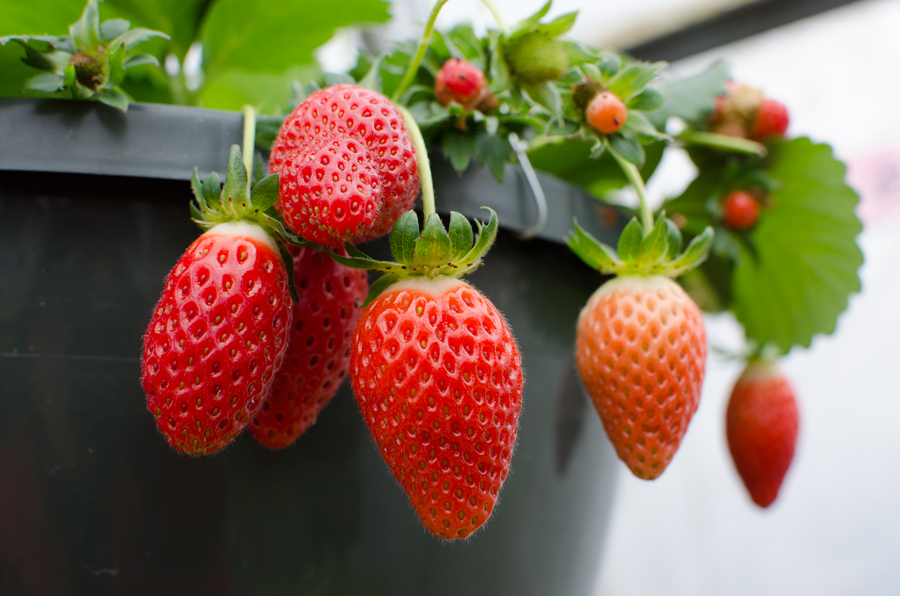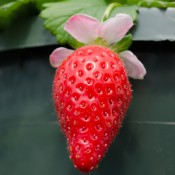Fragaria x ananassa.
Strawberries were prized in ancient times by the Romans for its medicinal uses. Today, the common garden strawberry is a hybrid of two species: the big and juicy Chilean strawberry crossed with a sweet red American species. Strawberries are actually a member of the rose family are not “technically” berries. They are the only fruit with seeds on the outside. An average strawberry has about 200 seeds. Strawberries are one of the most common garden crops in North America because they are easy to grow and produce berries for many years.
Strawberries are best planted in early spring or late fall and they need a lot of sun. They taste best when grown in humus-rich soil. Soil should be well-drained, as the plants hate having wet feet which can lead to root rot.
Plants such as eggplant, tomato, peppers, and potatoes should not be planted next to strawberries because they carry verticillium that can cause the strawberry plant to rot. Other edibles that should be avoided include fennel, kohlrabi, and Brassicas (cabbage, broccoli, kale, etc.). Good companion plants for strawberries include beans, onions, garlic, lettuce, spinach, peas, borage, and thyme.
There are three types of strawberries:
June bearing: produces one large crop per year, during a 2-3 week period in spring. The fruits of June bearing tend to be the largest of three types.
Everbearing: produces 2 or 3 intermittent crops during spring, summer, and fall. The fruits are a bit smaller than June bearing.
Day Neutral: similar to everbearing, but produces continuously throughout the growing season.
| Nutrition | Strawberries contain more Vitamin C than some citrus fruit. They are a fair source of folate, fiber, manganese, potassium and iron. Strawberries are packed with antioxidants that help keep “bad” (LDL) cholesterol from oxidizing and reduce the chances of heart disease, high blood pressure and certain cancers. |
|---|---|
| Harvesting | Fruit usually sets 3 to 5 weeks after blossoms first appear. Some experts say you are supposed to cut off the flowers in the first year to ensure a larger crop the second. Harvest berries when they are fully red and ripe; that’s when the flavour is most intense. They will not continue to ripen once they are picked. |
| Storing | Strawberries do not store well so pick every couple of days. Removing the hulls when picking greatly increases spoilage. Keep refrigerated in a ventilated basket or container. |
Varieties Listing
Berries Galore is an excellent dual-purpose edible and ornamental selection noted for its wild berry taste. This everbearing runner variety bears large fruit which can be harvested frequently throughout summer and autumn. It has glossy, deep green leaves and large early blooms. Productivity increases with the age of the plant. Plant so their roots are… Read more »
Back to Organic Edibles.


